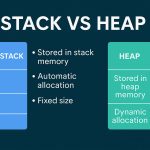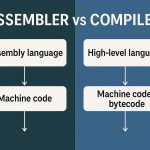Description
Linux is a free and open-source, Unix-like operating system kernel first released by Linus Torvalds in 1991. It is the foundation of numerous operating systems known as Linux distributions (or distros), such as Ubuntu, Fedora, Debian, CentOS, Arch, and Red Hat Enterprise Linux. Built around the Linux kernel, these distributions offer user interfaces, libraries, tools, and applications needed to run computers, servers, mobile devices, and embedded systems.
Linux is known for its stability, security, flexibility, and powerful command-line interface (CLI), making it a popular choice among developers, system administrators, and power users.
History
- 1991: Linus Torvalds announces the initial Linux kernel.
- 1992: Linux kernel released under the GNU General Public License (GPL).
- 1993+: Rapid development and the emergence of distributions like Slackware and Debian.
- 2000s-Present: Widespread adoption in servers, supercomputers, mobile (Android), and embedded devices.
Architecture
A Linux-based operating system typically consists of:
- Kernel: The core, responsible for managing hardware and system resources.
- System Libraries: Used by programs to interact with the kernel.
- Shell: A command-line interface to interact with the OS.
- Utilities and Applications: Software that provides additional functionality.
[ Applications ]
↓
[ Shell ]
↓
[ System Libraries ]
↓
[ Kernel ]
↓
[ Hardware ]Key Features
- Open Source: Source code is freely available and modifiable.
- Multitasking: Supports running multiple processes simultaneously.
- Multi-user: Allows multiple users with different privileges.
- Security: Built-in user permissions, SELinux, AppArmor.
- Portability: Runs on a wide variety of hardware platforms.
- Command-line power: Rich CLI for automation and scripting.
Popular Distributions
| Distribution | Use Case | Maintained By |
|---|---|---|
| Ubuntu | Desktop, Server | Canonical |
| Fedora | Cutting-edge features | Red Hat |
| Debian | Stability & servers | Debian Project |
| Arch Linux | Customization & control | Arch Community |
| CentOS | Enterprise environments | Red Hat (legacy) |
| Kali Linux | Penetration testing | Offensive Security |
Linux File System Hierarchy
| Directory | Description |
/ | Root directory |
/bin | Essential binaries |
/etc | Configuration files |
/home | User directories |
/var | Variable data like logs |
/tmp | Temporary files |
/usr | User-installed software |
/dev | Device files |
/proc | Process and kernel information |
Common Linux Commands
ls # List directory contents
cd # Change directory
mkdir # Create directory
rm # Remove files or directories
top # View running processes
ps # Show process status
chmod # Change file permissions
chown # Change file owner
cp # Copy files
mv # Move or rename filesPackage Management Systems
- Debian-based (Ubuntu, Debian):
apt,dpkg - Red Hat-based (Fedora, RHEL):
dnf,yum,rpm - Arch Linux:
pacman - Universal:
snap,flatpak,AppImage
Example
sudo apt update && sudo apt install curlShell and Scripting
Most Linux systems use Bash as the default shell.
Bash Script Example
#!/bin/bash
for file in *.txt; do
echo "Processing $file"
doneLinux in the Real World
Servers
- Web servers (Apache, Nginx)
- Database servers (MySQL, PostgreSQL)
Cloud
- Most cloud services (AWS, GCP, Azure) run on Linux VMs
Android
- Android OS is built on the Linux kernel
IoT and Embedded Systems
- Routers, smart TVs, and industrial systems use lightweight Linux builds
Supercomputing
- As of 2024, 100% of the world’s top 500 supercomputers run Linux
System Administration Tools
- systemctl: Manage systemd services
- cron: Schedule tasks
- ssh: Secure remote access
- rsync: Sync files and directories
- iptables: Firewall configuration
Linux vs Windows
| Feature | Linux | Windows |
| Source Code | Open | Closed |
| Cost | Free | Paid (mostly) |
| Security | Strong user isolation | Target of more malware |
| Customization | High | Limited |
| CLI | Powerful and default | Optional, limited |
Summary
Linux is a robust, versatile, and widely adopted operating system used in environments ranging from personal laptops to large-scale data centers. Its open-source nature empowers developers and organizations to build secure, scalable, and efficient systems. Whether you are a system administrator, software developer, or hobbyist, learning Linux can dramatically enhance your technical skill set and career opportunities.









